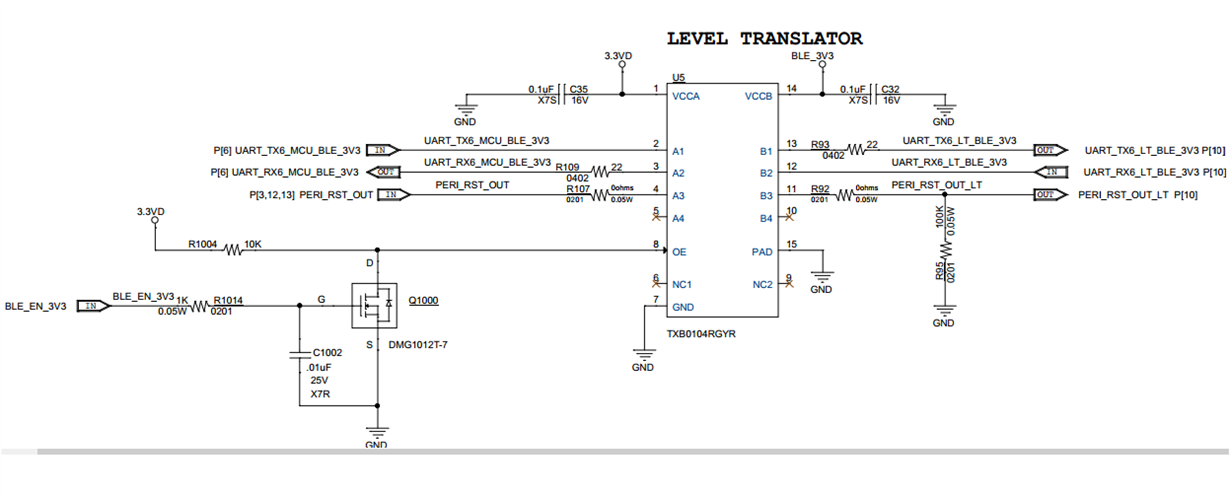Hello , we are using TXB0104 IC in our design in RGY package for UART signal voltage translation. In our design we are seeing that the voltage on B side is not proper for one of the signals Please see below picture , the issue i am pointing out is with signal observed on pin13
THe waveforms of Pin2 (Yellow) and Pin 13 (Blue) are shown below :-
I have following questions
1. If you see the waveform at pin 13 , it is not at zero volt really even when the Input side signal at pin 2 is at zero Volts. As recommended in datasheet of TXB0104 , we do not have any pullups or pulldowns on either B side or A side. Our signal driver on A side for pin 2 is of push pull type .So why does the level at pin 13 side not proper ?
2. WE have left floating the pins 5 and 10 , though this is not recommended , but i believe that is not an issue causing improper levels as per point 1 above since anyways there is a weak driver on each side of the TXB0104 and once one side is latched to a high or a low , the other side should continue driving the same. Is it not ?
3. WE have also connected the exposed GND PAD under the IC to our board Digital GND ( common to both input and output side of this translator) - is that the issue behind the improper levels we are seeing as per point 1
We are ensuring in our design that the OE pin of the translator is driven low at power up and only when required , it is drive high during data transmission.
Regards
jitender



